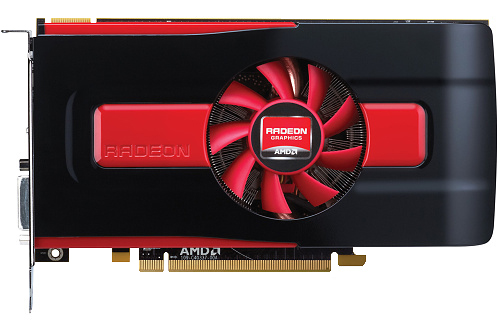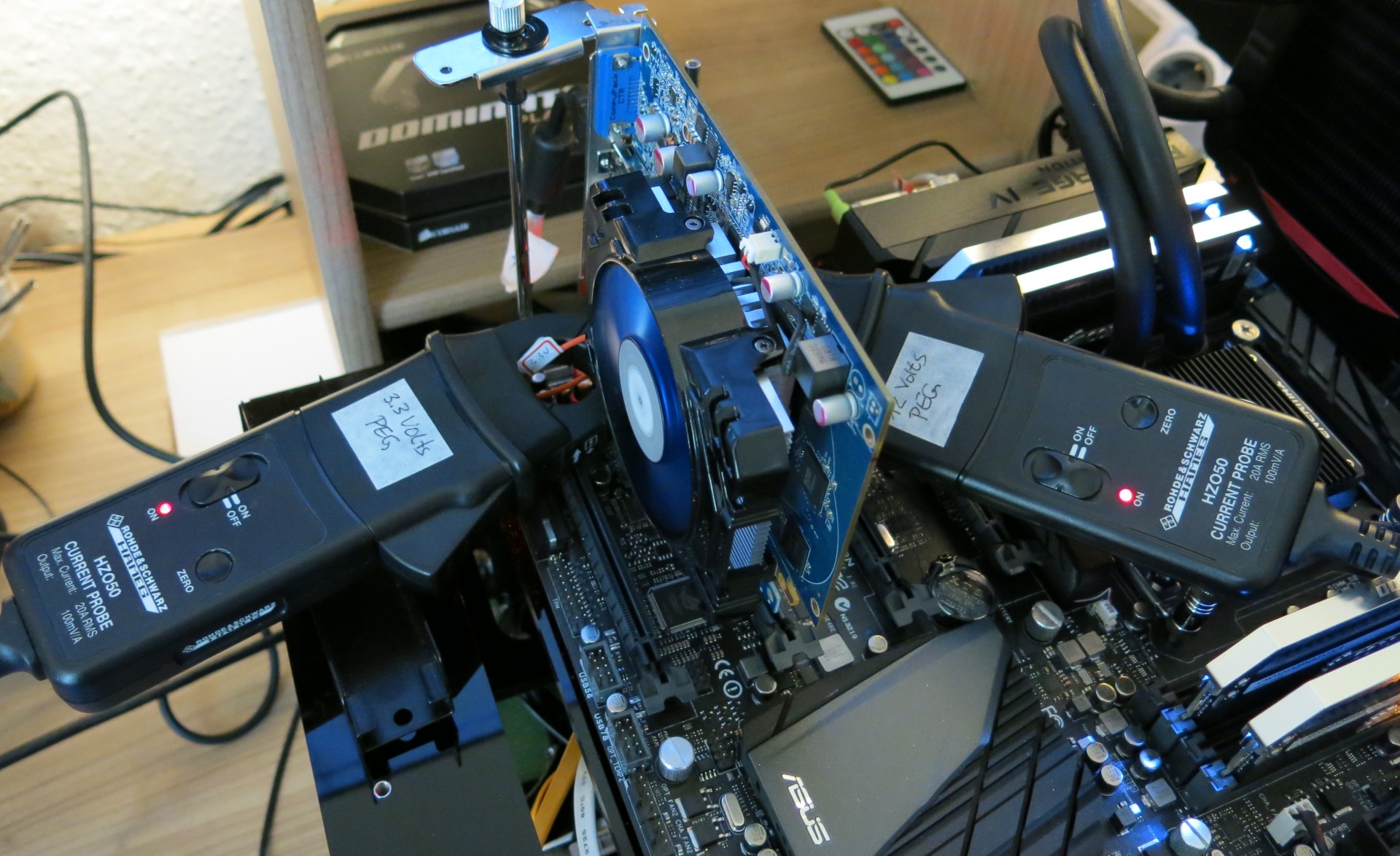Tom's Hardware Graphics Charts: Performance In 2014
Two years and two graphics card generations have passed since the last major update to our famous graphics card performance charts. It's time to get them back up to speed. We introduce modern benchmarks, new measurement equipment, and fresh methodology.
Covering The Bases
This last page includes some of the details that we don't want falling through the cracks.
Measuring Temperatures
For example, we’re measuring temperatures in a room with an ambient temperature of 22 degrees Celsius; it has a very good air conditioner that keeps up with this requirement easily. Twenty-two degrees strikes a good balance between an air-conditioned room in the summer and a heated space in the winter. Also, the room is large enough that even high-end configurations don't heat it up and affect the results.
Emulating Reference Graphics Cards
Vendors don’t always send us reference samples to review when a model launches. If the "new" board is old technology, rebranded, such as AMD's Radeon R7 265, we simply use the original card and adjust clock rates as necessary.
On the other hand, some products are never made available as a reference design, in which case we have to use a board partner's interpretation of the card set to reference frequencies. In those cases, we mark the chart entry with a (*) and leave out noise and temperature measurements.
Lower-End Graphics Cards
Some entry-level cards just cannot keep up with our benchmark settings, particularly at higher resolutions. We skip them with this happens. Again, I want to mention that we'll have a separate collection of charts for lower-end discrete boards and integrated graphics engines. The quality options will be re-calibrated with a lot less performance in mind.
Nevertheless, mid-range cards are still important in the marketplace. So we fully intend to run them through our complete benchmark suite, while maintaining the quality of our measurements, refilling our charts section with precise benchmark results.
Charts like ours always represent a compromise between effort and depth, which is why we've forgone some blockbuster titles in favor of a more balanced mix of benchmarks. We think that we’ve succeeded in providing a good combination of game complexity, resolutions, and detail settings. Hopefully, this, in conjunction with our elaborate power consumption and noise data, allows to paint an objective picture of today's (and yesterday's) most popular graphics cards for you.
Get Tom's Hardware's best news and in-depth reviews, straight to your inbox.
In The Weeks To Come...
Since we’d like to first and foremost provide a good overview of the current state of affairs, we’re starting with AMD’s and Nvidia’s current-gen reference card models. The next step is to include the prior generation still used by so many gamers. Finally, we’ll add board partner offerings from the past two years.

Igor Wallossek wrote a wide variety of hardware articles for Tom's Hardware, with a strong focus on technical analysis and in-depth reviews. His contributions have spanned a broad spectrum of PC components, including GPUs, CPUs, workstations, and PC builds. His insightful articles provide readers with detailed knowledge to make informed decisions in the ever-evolving tech landscape
-
blackmagnum Thank you Tom's team for updating the charts. You're my goto when I'm upgrading my rigs. I'll be waiting... Bring on yesterday's gems.Reply -
tomfreak First thing Tom need is to bench how PCIE 2.0 8x vs 16x perform on a modern top end GPU. Since 290X are passing the bandwidth from crossfire bridge to PCIE, may be is time to check them again? As I recall AMD do not recommend putting 290x XDMA crossfire on PCIE 2.0 8x. Please check this outReply -
cypeq First it's great to see new charts.Reply
I was never a fan of this style of benchmarking. It sure gives clean graph of gpu capabilities which we always needed. I would love to see new bottleneck analysis. Or at least parallel test done on midrange PC.
Everyone should keep mind that these charts represent performance of <1% PC builds out there.
13278215 said:First thing Tom need is to bench how PCIE 2.0 8x vs 16x perform on a modern top end GPU. Since 290X are passing the bandwidth from crossfire bridge to PCIE, may be is time to check them again? As I recall AMD do not recommend putting 290x XDMA crossfire on PCIE 2.0 8x. Please check this out
If I recall correctly we are at this moment at the edge of PCI 2.0 x8 which = PCI 1.0 x16 . Next or following gen will finally outdate PCI 1.0 in single and PCI 2.0 in dual GPU configs as there will finally be noticeable bottle necks. -
mitcoes16 Any Steam OS or GNU/Linux benchmarks?Reply
It would be nice to add any opengl crossplattform game as any ioquake based one or something more modern and test it under MS WOS and under GNU / Linux
Better if it is future Steam OS to let us know the performance at the same game under MS WOS and under GNU/Linux.
Also it would be nice to test at MS WOS with and without antivirus, perhaps avast that is free or any other of your preference.
Last but not least, in opengl or in directx there are version changes and being able to split cards generations by opengl / directx version support would help as a current price / performance index based in your sponsored links prices. -
mitcoes16 No 720p tests?Reply
720p ( 1280x720 píxels = 921.600 píxels) is half 1080p more or less
1080p (1920\00d71080 píxels = 2.073.600 pixels)
And when a game is very demanding or you prefer to play with better graphics playing at 720p is a great option
Of course,latest best GPUs would be able to play at 4k and full graphics, but when we read the benchmarks we want to know also if our actual card CAN play at 720p (1k) or what the best ones can do at 1k to be able to compare
Also even it is not a standard or accurate, for benchmarking purposes calling 720p (1k) 1080p (2k) and 2160p (4K) wouldbeeasier to understand in a fast sight than UHD FHD and HDR, that can be used too UHD (4k) FHD (2k) HDR (1k) -
InvalidError Reply
720p does not stress most reasonably decent GPUs much and how many people would drop resolution to 720p these days with all the re-scaling artifacts that might add? In most cases, it would make more sense to stick with native resolution and tweak some of the more GPU/memory-intensive settings down a notch or two - at least I know I greatly prefer cleaner images over "details" that get blurred by the lower resolution and re-scaling that further distorts it.13278758 said:No 720p tests?
Considering how you can get 1080p displays for $100, I would call standardizing the GPU chart on 1080p fair enough: the people who can only afford a $100 display won't care much about enabling every bell and whistle and the people who want to max everything out likely won't be playing on $100 displays and $100 GPUs either. -
2Be_or_Not2Be I really like to see the charts on how much noise a video card's cooling fans make. That makes more of a difference to me as limiting something distracting that I hear every time I game versus getting a louder card with 10 fps more.Reply
I also like seeing how current cards stack up performance-wise to previous generations. That really helps when you're deciding whether to upgrade or not.

